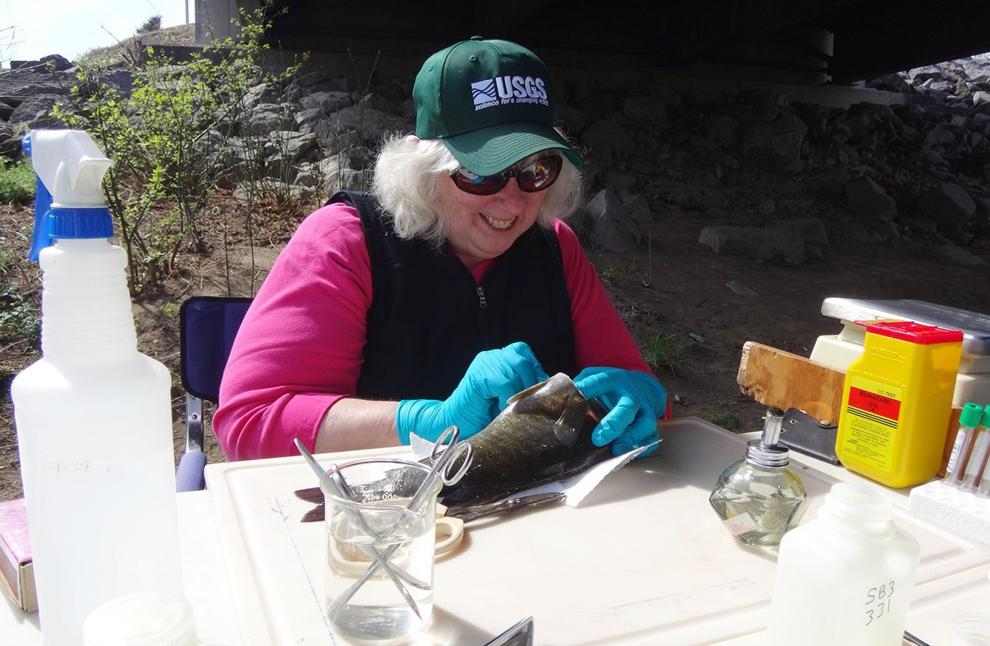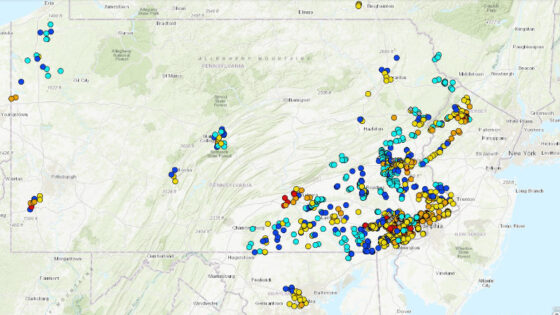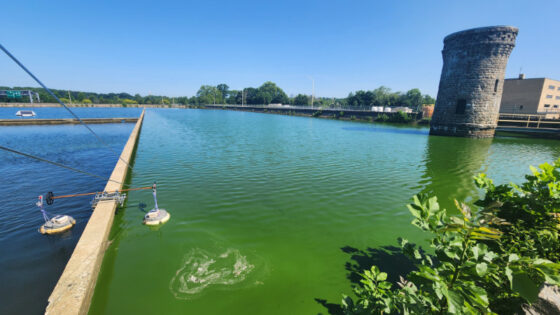
By Ad Crable
A mostly Pennsylvania-based study of smallmouth bass, a popular gamefish, found that the family of chemicals known PFAS — officially called per– and polyfluoroalkyl substances — do build up in parts of the fish. Those parts are not normally eaten, though, making them safe for the dinner plate.
But the examination of 380 adult smallmouth bass also found significant levels of PFAS in those collected from waters that flow through farmland.
Researchers had expected to find the chemicals near military bases, airports and in industrial and urban areas. And they did. But they did not expect to find significant contamination in undeveloped areas, especially agricultural areas.
Though researchers stress that follow-up research is necessary, they suspect PFAS are running off farm fields and into waterways from the use of pesticides and the application of biosolids from sewage treatment plants that are used as fertilizer.
The use of livestock manure as fertilizer may also be sending PFAS into creeks and rivers if the livestock are eating forage grown on contaminated soil, said Vicki Blazer, the USGS fishery biologist with the U.S. Geological Survey who led the study.
The buildup of PFAS in the environment, wildlife and humans is an increasing concern and relatively new discovery. Because the chemicals are resistant to grease, stains and water, they are widely used in such products as firefighting foams, nonstick cookware, cosmetics, and carpet and clothing treatments.
Among the potential health risks to humans are kidney and testicular cancer, thyroid disease, liver damage, slow developmental growth in children, high cholesterol and immune system dysfunction.
The chief goal of the USGS study, recently published in the journal Environmental Science and Pollution Research, was to determine where PFAS accumulate in smallmouth bass and whether it makes them unsafe to eat.
As luck would have it, the plasma of adult bass collected from 2014–2019 had been stored from a USGS study of, among other concerns, population declines, skin lesions and fish that were exhibiting both male and female characteristics.
The bass were collected from 10 sites. Five are in Pennsylvania: Pine Creek, Chillisquaque Creek, West Branch Mahantango Creek, Swatara Creek, Little Neshaminy Creek, and the West Branch Susquehanna River. They also came from Antietam Creek in Maryland and three sites in West Virginia. All but Little Neshaminy Creek are in the Chesapeake Bay watershed.
Researchers found that PFAS build up mostly in a fish’s blood and liver, and not in the fillets that people generally consume.
Follow-up testing is underway with lab-raised bass to see if exposing them to PFAS at the levels found in the wild bass affects their health over time.
To date, the Pennsylvania Fish and Boat Commission has only issued one fish consumption advisory based on PFAS contamination. That is in the Neshaminy Creek basin in Bucks and Montgomery counties, where several military bases are known to have used firefighting foam high in PFAS. No fish of any species in the Neshaminy watershed should be consumed, the commission advised.
The agency noted that PFAS are “emerging” contaminants, meaning that their risks to the environment and human health are not yet completely understood. Examination of fish tissues in waters found to have high PFAS levels has been conducted since 2019.
But the USGS study raised red flags when at least four PFAS compounds were found in every bass. Two of the sites had 28 compounds.
“This suggests that PFAS may be widespread in Chesapeake Bay waters and in smallmouth bass,” the USGS concluded.
Moreover, the study says that agricultural land may be associated with PFAS.
“There are certain pesticides that are considered PFAS-containing and also that can be precursors for certain of the PFAS we measure,” Blazer of the USGS said in an interview.
“There is a lot of concern about municipal biosolids and their levels of PFAS. It also makes sense that animal manure could also contain PFAS as plants they may be eating can certainly absorb PFAS from the soil. Just like with humans, diet can certainly be a major exposure pathway.”
Biosolids, also called sewage sludge, come mainly from municipal sewage treatment plants or private firms that process septic tank and industrial sewage. In Pennsylvania, nearly 40% of biosolids end up spread on farmland as a soil nutrient booster.
The state Department of Environmental Protection prohibits the spreading of biosolids containing high levels of nutrients, PCBs and such heavy metals as arsenic, cadmium, copper, lead and mercury.
But neither the state agency nor the U.S. Environmental Protection Agency yet requires testing for PFAS in biosolids.
The Pennsylvania-based Stroud Water Research Center and the Center for PFAS Solutions in Delaware have been studying how much biosolids are contaminating farmland and adjacent waters since 2021.

“It’s very clear that biosolids do bring PFAS contamination to the soils,” said Diana Oviedo Vargas, assistant research scientist at the Stroud Center.
Scientists reached this conclusion after studying the soil at 10 farms in Berks, Adams, Bedford and Chester counties. Each farm had areas where biosolids were spread and areas where they were not.
“We know very little about the dangers to crops,” Vargas said. “You cannot use biosolids on plants for direct human consumption, such as tomato plants. But does that mean they won’t end up in animals and our food as well, and at what point is it a concern? We don’t know any of those things.”
That concerns Matt Ehrhart, the Stroud Center’s director of watershed restoration. “There are wastewater treatment plants with very low PFAS-related compounds and treatment plants with high loads,” he said.
“It would not be logistically challenging to understand which [wastewater] plants have low loads and only [use] those for land application. This would also create pressure on the other plants to require pretreatment from their load sources,” he said.
“The regulatory system is obviously still trying to catch up with the science, but it seems like some simple steps could make a significant impact.”
This article is reprinted with permission from The Chesapeake Bay Journal.



